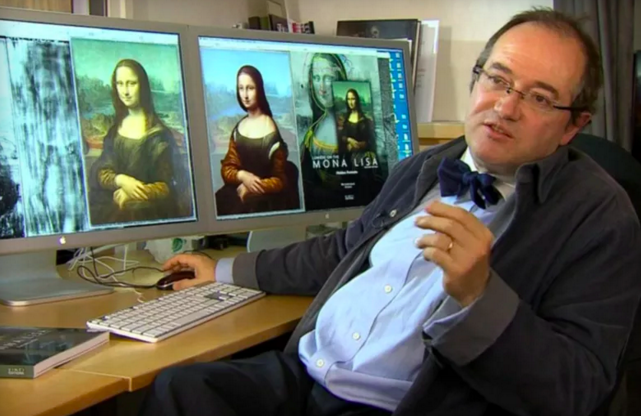Secrets of the Mona Lisa: Forensic examination unlocks history's 'most enigmatic work of art'

One of the most famous paintings in the world is giving up her secrets in 'one of the stories of the century', according to art historian Andrew Graham-Dixon. In a new BBC documentary called The Secrets of the Mona Lisa, Graham-Dixon uncovers the myth behind the woman portrayed, with theories "ranging from the ingenious to the crackpot. She's a pregnant mother-to-be, she's a prostitute, she's even a man in drag," he said.
"There will probably be some reluctance on the part of the authorities at the Louvre in changing the title of the painting because that's what we're talking about – it's goodbye Mona Lisa, she is somebody else." During the making of the new programme, the Louvre declined to comment on the new revelations.
In the first full forensic examination of Leonardo da Vinci's masterpiece, an image of a portrait was found beneath the Mona Lisa. Using a multi-spectral camera and reflective light technology, a French scientist has discovered that the figure underneath has a bigger head and could have worn a headdress, with her face turned by 14 degrees. There is the suggestion that she once held a blanket in her hand.
Pascal Cotte said he has spent more than 10 years using the technology to analyse the painting. He is the co-founder of Lumiere Technology in Paris and pioneered a technique called Layer Amplification Method (LAM), which he used to analyse the Mona Lisa at the Louvre in 2004.

"We can now analyse exactly what is happening inside the layers of the paint and we can peel like an onion all the layers of the painting. We can reconstruct all the chronology of the creation of the painting," he said. Cotte announced the findings of his latest research at a press conference in Shanghai on 8 December. They will be included in an exhibition, Da Vinci – The Genius, which opened in Shanghai.
The new BBC documentary also reveals the alleged discovery of a new Mona Lisa in St Petersburg, Russia. A wealthy Russian art collector is said to have recently acquired a new painting from a very old American family who'd had it since the end of the 18th century. After extensive examinations by an art expert, it is now thought to be a later copy and now resides in the former KGB headquarters building.
Who was the Mona Lisa?
The most likely candidate is Lisa Gherardini, the wife of silk merchant Francesco del Giocondo of Florence. She would have been in her mid-20s when she sat for her portrait with Leonardo da Vinci in 1503. Leonardo worked on the Mona Lisa — or La Joconde, as she is known in France —for four years, but never completed.
Another theory argues that Mona Lisa was actually a male lover of Leonardo da Vinci. According to Silvano Vincenti, head of the Italian National Historic Properties Evaluation Commission, the muse for the portrait was Giangiacomo Caprotti da Oreno, also known as Salai. H was "a very attractive youth of unusual grace and looks, with very beautiful hair which he wore curled in ringlets and which delighted his master", says Vincenti.
Salai was a small child when he entered Leonardo's household in 1490 as an assistant. He remained with Da Vinci until the artist's death. It is commonly believed that in the artist's will, Salaì inherited several paintings including the Mona Lisa as well as half a vineyard. Vincenti described their relationship as "ambiguous," and most art historians concur that Salai was one of Da Vinci's lovers. However, the theory has been refuted by Pietro Marani, art historian and Da Vinci expert, who called the suggestion "groundless."
The smile
In late 2005, Dutch researchers from the University of Amsterdam ran the painting's image through "emotion recognition" computer software developed in collaboration with the University of Illinois at Urbana-Champaign. The technology demonstration found the smile to be 83% happy, 9% disgusted, 6% fearful, 2% angry, less than 1% neutral, and 0% surprised. Her amused expression is said to be the result of musicians and clowns that Da Vinci employed to keep her from growing bored.
© Copyright IBTimes 2025. All rights reserved.




















